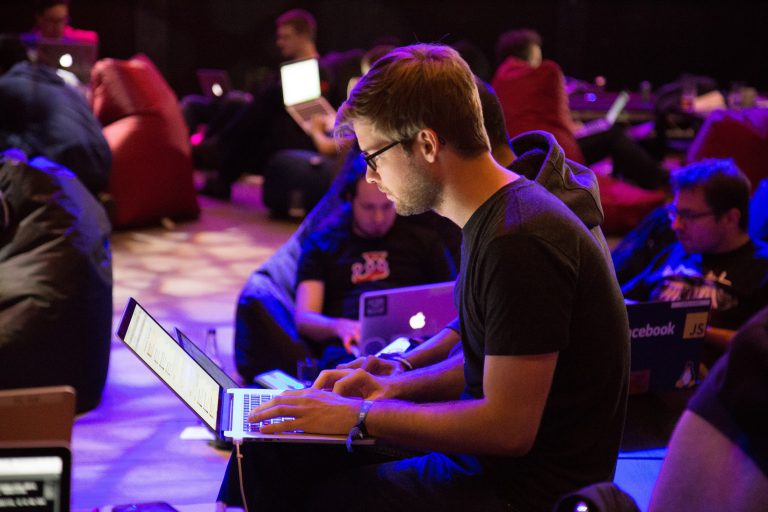The digital transformation is leading to experiences that are increasingly immersive and personalized for university students
3 March, 2022 Photo by Alex Kotliarskyi on Unsplash
Photo by Alex Kotliarskyi on Unsplash
UOC releases report covering global trends in technology and digitization in universities
Trends in technology and digitization in universities are the focus of the report entitled La transformació digital i la digitalització de processos a la universitat (The digital transformation and digitization of processes in the university), prepared for the Universitat Oberta de Catalunya (UOC) by Roca Salvatella, company providing services for the development of organizations’ business and culture based on opportunities offered by web technologies and digitalization. The study provides an overview of what other universities are doing in terms of digital transformation with the presentation of a series of cases that reflect the changes taking place in higher education. These changes are evident on two levels: the student experience and the efficiency of internal processes.
Choice of studies and university
The report highlights some innovative initiatives to help guide students towards their choice of studies and university, such as matching platforms, which in some cases use artificial intelligence to connect profiles with institutions. In addition, some universities invest in website customization. The report highlights the case of Bryant University as an example of university admissions via customized and immersive experiences.
Access and admission process
The study also looks at initiatives involving the access and admission process at different universities, with specific examples from Santa Fe College and the London School of Economics and their innovative audience segmentation formulas. Bonding and connecting new students is a field in which progress is also being made, as demonstrated by Zeemee, a social network for university admissions that allows prospective students to create a multimedia profile.
New value propositions and employability
The report also details new value propositions that democratize access to higher education, such as peer-to-peer education (P2P). Along the same lines, the report includes examples of a new trend known as education as a service, which adopts a XaaS or “anything as a service” model. Employability is at the centre of other initiatives included in the study with examples from institutions that offer certain bachelor’s degrees or courses with guaranteed employment, for example.
New open services and sales channels
New open services (via API) are systems of interconnection involving the sharing of courses, bachelor’s degrees, research content or information standardization. Various international universities, including the UOC, offer such initiatives. Also noteworthy are the new sales channels that have appeared in recent years, such as Lynda and Jolt.
In addition, the report includes dozens of projects designed to improve the assessment experience, involving the verification of identity using artificial intelligence and machine learning for the detection of fraud or deception. Online exam supervision has also been booming since the explosion of remote education.
Improving the learning experience
The study explores several initiatives that enhance the learning experience from video-based educational platforms or others that incorporate augmented reality. In this case, it combines virtual and real elements that are viewed through a device, so that knowledge can be accessed from different points of view.
Other initiatives incorporate the podcast format, the use of social networks pedagogically or microlearning, which consists of delivering information in small doses. The learning experience can also be enhanced with initiatives to do value searches on the internet thanks to big data or that facilitate the note-taking process by the student, the creation of portfolios or platforms for filtering, sharing, and presenting content in an orderly manner.
Improved certification with blockchain technology
The report describes the use of blockchain technology to improve the transparency of permanent certification, a need that has arisen in recent years to keep data secure. This technology is also used to verify documents passing through an organization. Technology avoids duplicate information and document manipulation.
Continuous comprehensive support to the student
Continuing student support is at the heart of other initiatives that include personal and voice assistants or virtual assistants (chatbots). This also includes digital career offices to provide career guidance services. In recent years, applications that digitize the services offered to students on campus have also been invested in. The report highlights the examples of Unimad and Uniwhere.
New trends also include initiatives aimed at a 0% dropout rate, such as artificial intelligence tutorials, grading prediction, student monitoring, and gamification to reduce dropout rates.
Improving student performance
There are also projects for improving student performance, as is the case with comparative platforms for students to compare their results with those of their peers. Artificial intelligence is being applied in this field to automatically evaluate profiles in talent recruitment processes. There are also initiatives for improving the relationship between students by connecting them on the basis of shared interests.
Once the student leaves the university, the link with the organization is maintained and there are many examples of continuing education projects, like the virtual life coach, and others designed to connect the student community to the world of work. P2P Alumni coaching, an automatic system for connecting alumni to job offers and the customization of content for alumni are further examples.
Improving the efficiency of internal processes in universities
The final part of the report presents examples of projects that are improving the efficiency of internal processes in universities. Initiatives focus on customized marketing actions that include targeting potential students, the analysis and management of commercial and marketing actions, analysing the student profile and metrics, and social listening as a tool for customer and community awareness.
The last chapter of the report explores tools for improving the experience for teaching staff and employees, with tools that make the correction process more efficient, facilitate support in personal development through a mentor and the automation of employee training.
This report is part of the UOC’s commitment to achieving United Nations Sustainable Development Goal (SDG) 4, Quality Education.






